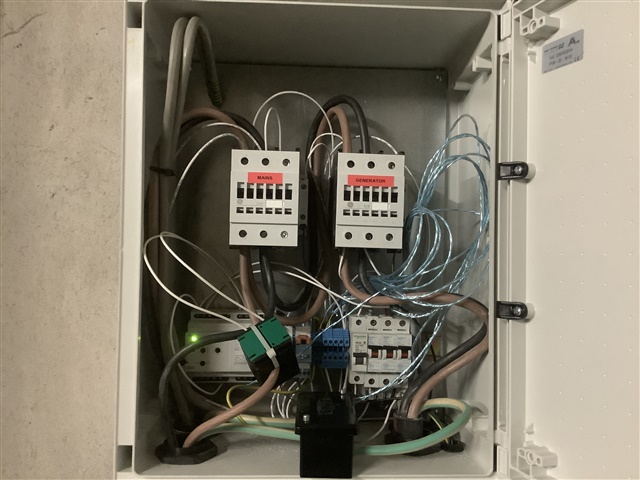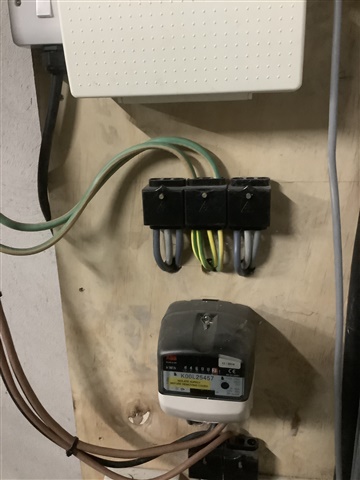

An assembly to be proud of! The wiring down to the meter is just a bit of HO7RNF with the outer sheath stripped back. The door pulls open with a simple thumb-turn.
It is an automatic start up which kicks in when the load exceeds some pre-set value. It disconnects the mains to a business venture at the rear of a farm. Of course there is a delay and so tills, computers, cctv etc are all interrupted.
Installed in the attached garage of the dwelling. Speculating that this was moonlighting by someone who messes with gen sets but has never touch base with 7671!